Do not take skinny wives and other rules of family life in Russia
Categories: History
By Pictolic https://pictolic.com/article/do-not-take-skinny-wives-and-other-rules-of-family-life-in-russia.htmlCreating a family is a responsible activity. If today we live in a civilized world and adhere to certain rules of morality, then in ancient times everything was different.
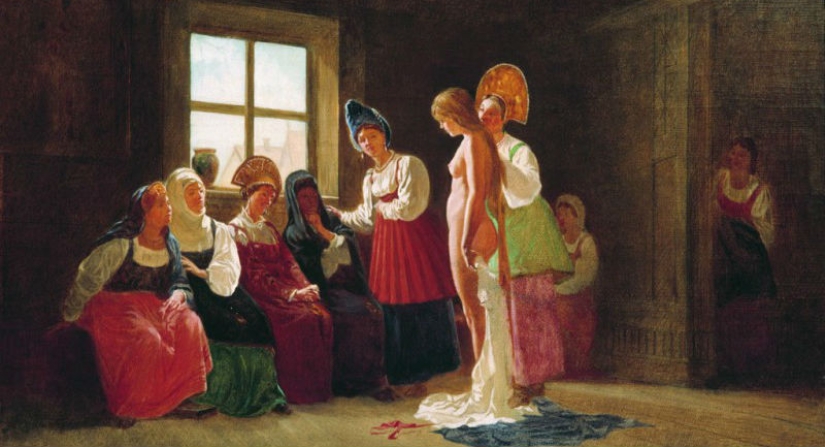
Today's women try their best to be slim, because that's what most men like. But if we were suddenly transported to the times of peasant Russia, then no one would even pay attention to the skinny young lady, preferring a pink-cheeked pampushka. Yes, men, by the way, would also have liked life in that time, because earlier in Russia, treason was not considered adultery at all, but was just fornication.
Read on, and you will learn about other features of married life in Ancient Russia.
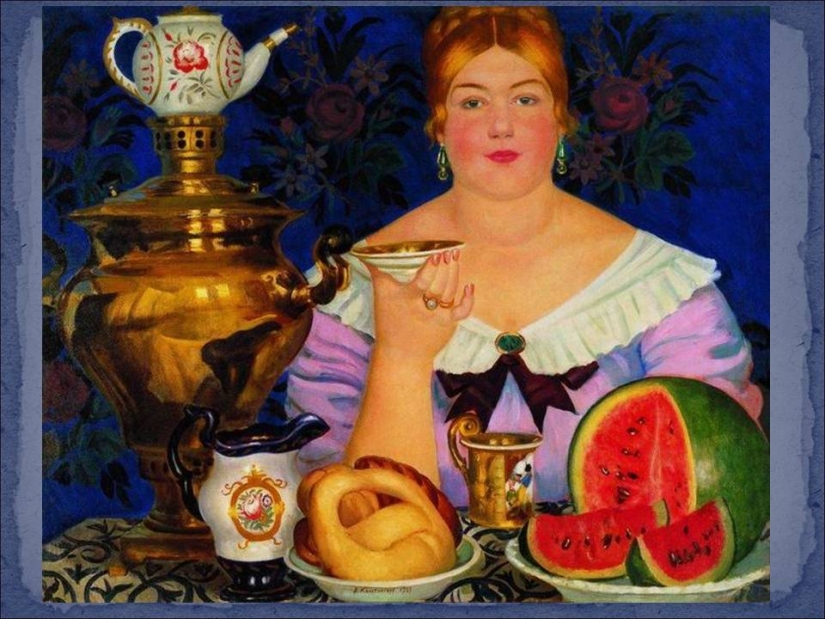
The ideal of beauty in Russia for many centuries was a full-bodied and broad-hipped woman, bursting with health. In those days, men did not like skinny girls at all. Thinness was a symbol of either poverty or disease. Also, matchmakers in those days were afraid to take a "yalitsa", that is, a barren girl. It was believed that thin girls would not be able to get pregnant or carry a child. They often have a narrow pelvis, so in ancient times they often died in childbirth or the child died. Anyway, our ancestors considered thinness a sign of ugliness, degeneration.

Now a mole on the cheek is synonymous with beauty, and previously the owners of such were not married. Any marks on the body — large birthmarks, moles-were considered serious shortcomings for the future bride. The presence of a small scratch, sores and even a runny nose could jeopardize the future marriage of the girl. In this regard, the bride tried not to show anyone and all the scratches, bruises to heal just before the wedding.
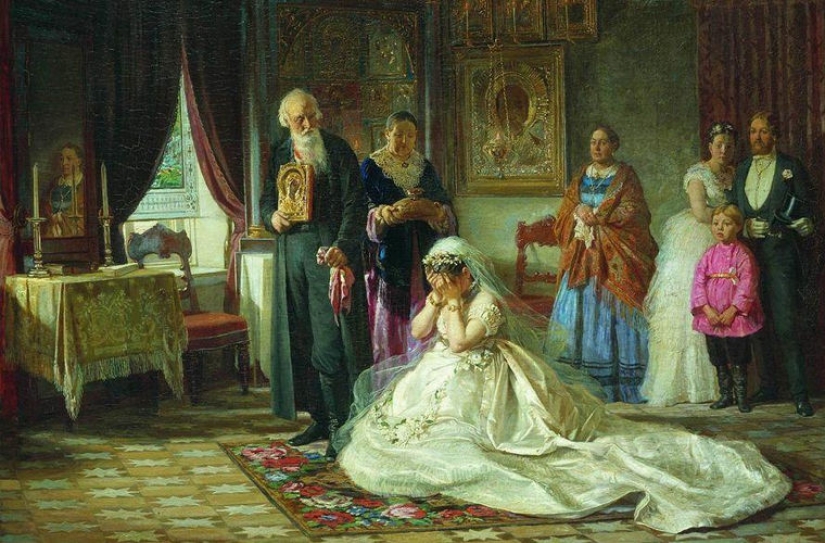
Brides before the wedding were carefully guarded also because there were "well-wishers" who tried to prevent the wedding. For example, Tsar Mikhail Fyodorovich wanted to marry a poor noblewoman, Maria, and his mother was not satisfied with this candidacy. When the wedding was to take place, the bride fell ill. The cause of the disease was simple — the girl was poisoned by cakes with stale whipped cream, which Mikhail Fedorovich's mother slipped her. Although her health was good, this fact was the reason for the termination of the engagement. At that time, everything was in use — both witchcraft plots and women's tricks.
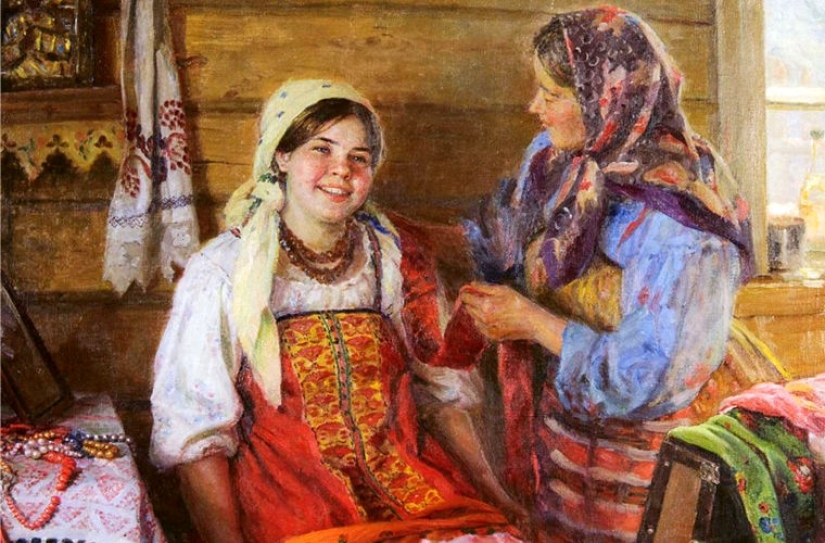
If a girl could not leave the walls of her parents ' house alone, then a married woman had no right to go anywhere, even to church, without the permission of her husband. But if she left the family nest, it was in full dress: her eyebrows were furrowed, her face was rouged and white, "and it was so rough and noticeable that it seemed as if someone had passed a handful of flour over their face and painted their cheeks red with a brush."
The wives of the nobles rode in closed carriages covered with red taffeta, where they " sat with the splendor of goddesses." The horse was decorated with fox tails. Acolytes ran alongside.
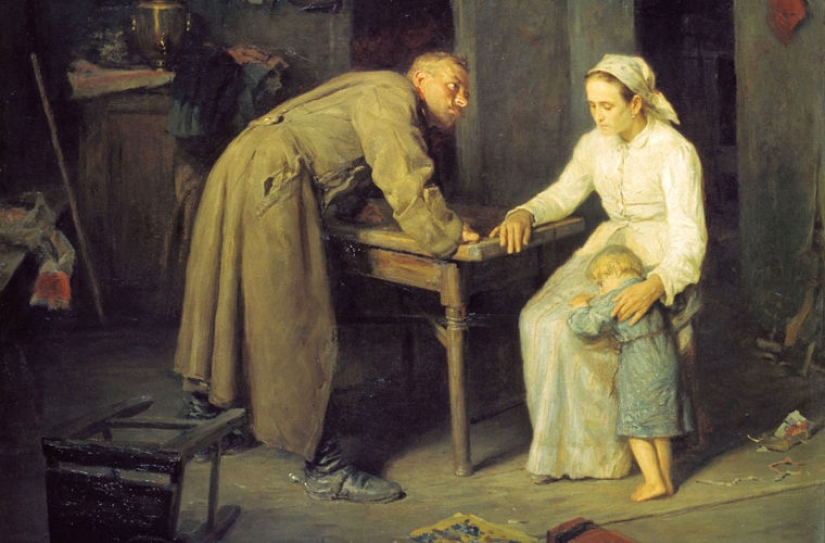
"Domostroy" (a set of rules and instructions of the XVI century) introduced some restrictions in the usual relations. It was recommended to beat his wife "not in front of people, to teach her alone" — "to beat her politely with a whip, holding her hands". There was also another appeal to humanity in the collection: "... do not beat anyone by sight, nor under the heart with a fist, nor with a kick, nor with a staff, nor with any iron or wooden one." For whoever " beats like that from the heart or from the cross, there are many parables from that: blindness and deafness, and an arm and a leg are dislocated, and a finger, and a glavobolie, and a tooth disease, and in pregnant women and children there is a violation in the womb." Foreigners were surprised that, for all that, " Russian wives saw in the frequent beating and flagellation a heartfelt love, and in the absence of them-the dislike and dislike of their husbands to themselves."
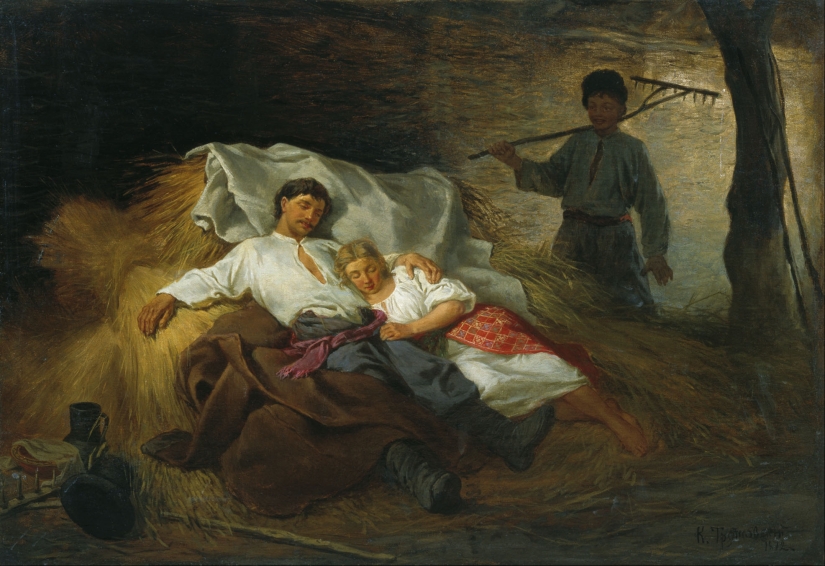
Sex with an unmarried or unmarried person was not considered adultery at all and was called "fornication". Men were often not punished for it, and women could be exiled to a monastery or given lashes. An adulterer was someone who had a long-term relationship with someone else's wife or mistress and children from her. However, other options were also considered — for example, in the "Metropolitan Justice" (XII century), it was told about two wives living with one husband, and in the "Legend of the murder of Daniel of Suzdal and the beginning of Moscow" (XVII century), two "sons of the red" boyar Kucka "zhysha with the princess in demonic lust, Sotoninsky law connected, depressing his body with prodigal love lust, filth in adultery". The infidel was fined in favor of the church.
A married woman convicted of fornication should be whipped, and then spend several days in a monastery, eating water and bread. After that, her husband beats her a second time for the work that was neglected at home. The husband who forgave the harlot should be punished.
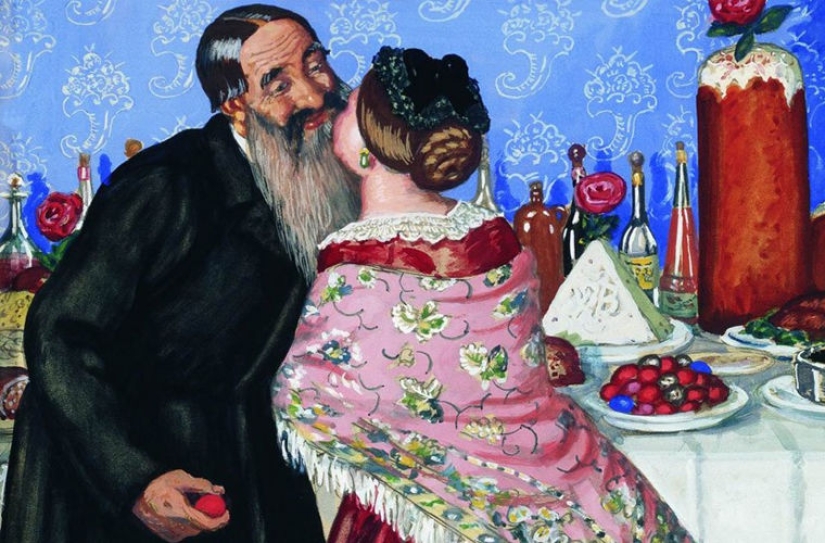
Showing his wife to a guest was the greatest sign of respect. In 1643, Prince Lev Shlyakhovsky liked the Holstein ambassador Adam Olearius so much that he took him to a special hall. Soon, his wife entered in a magnificent outfit. The ambassador was to take a glass of vodka from her hand, take a sip, and, if her husband signaled, kiss her on the lips.
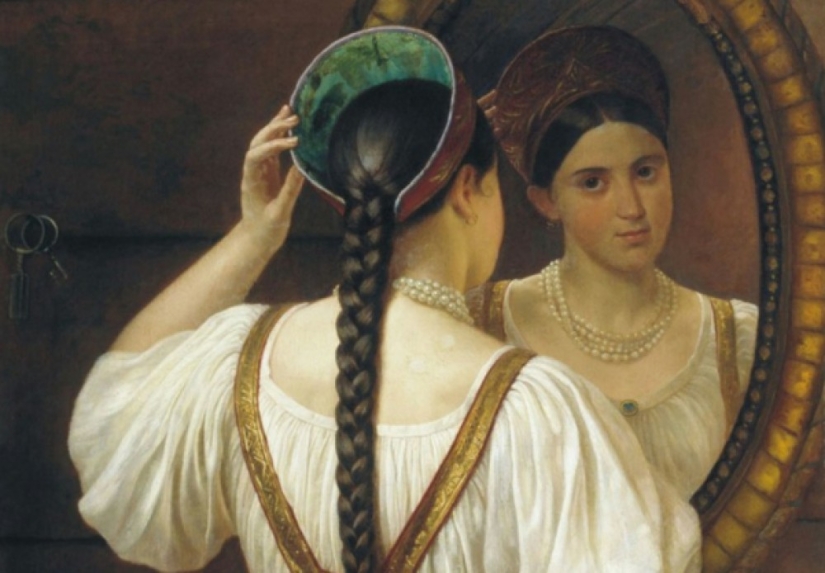
This is a common practice in the Russian countryside, in which a man-the head of a large peasant family (living in the same hut) — has sexual relations with the younger women of the family, usually with the wife of his son (the relationship of the father-in-law with the daughter-in-law, called the daughter-in-law). This practice became particularly widespread in the XVIII-XIX centuries, first in connection with the recruitment of young peasants as recruits, and then in connection with otkhodnichestvo, when young people went to work in the cities and left their wives at home in the village.
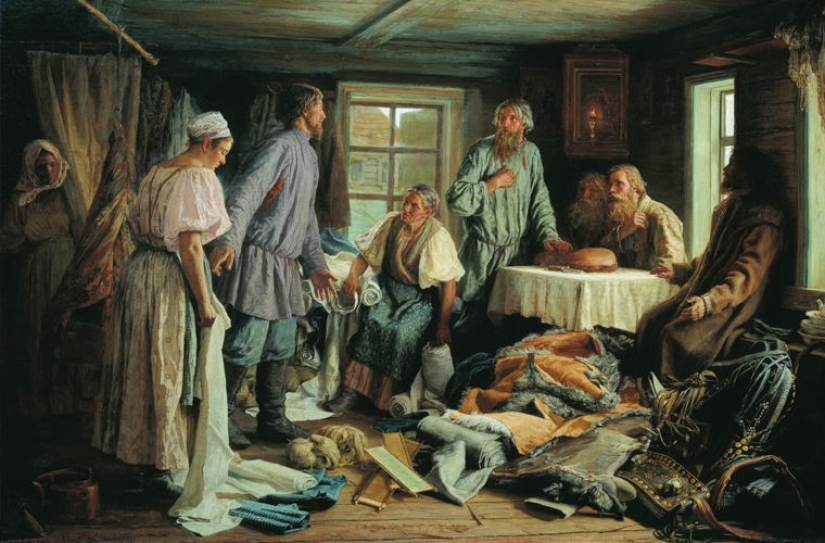
If family life is completely broken and there is no hope for peace between the spouses, then one of them can go to a monastery. If the husband leaves and his wife remarries, the deceased can become a clergyman, even if he has previously brewed beer. If the wife is infertile, then by sending her to a monastery, the man has the right to marry again in six weeks.
In the code of norms of "dissolution" (divorce), which is part of the "Charter of Prince Yaroslav" (XIII century), the reasons for divorce from his wife were given: in the case of adultery, confirmed by witnesses; because of communication with strangers without permission; for an attempt on the life of her husband or failure to report the threat of such. The wife, in turn, could ask for a divorce if the faithful "slanderously accused her of treason" (without proof). The reason could also serve as a long unknown absence of the second half, when the location is unknown.

Church marriage in Orthodoxy treats remarriage as undesirable. Canon law allowed only three marriages. St. Gregory the Theologian said:
Nevertheless, widowers and divorcees married for the third and fourth time. The church, although it condemned the third marriage, still believed that it was better than living in sin. But the fourth in a row getting a family was definitely considered illegal. The marriage was immediately annulled, and the priest who married such a couple, even in ignorance, was defrocked.

They preferred not to offend the Lord by performing their marital duty, even though it was a legitimate matter. Before getting down to business, they removed the cross on their body. If there were icons with the faces of saints hanging in the room, they were carefully hung. On this day, it was preferable not to go to church, and if there was an insurmountable need, then only after thoroughly washing and changing into clean clothes.

A woman who lost her husband and did not marry again automatically received all the rights that she had been deprived of in marriage. She managed the property, became a full-fledged mistress in her house and the head of the family, if there was one. Widows were respected in society.
Keywords: Russian Federation | History | Traditions | Family | Marriage | Rules | Ancient Rus | Rus
Post News ArticleRecent articles

May West once jokingly said that she should be given a license to invent sex, which she discovered for Americans. The name of this ...

Thailand is a kingdom of amazing beauty, where the colors of nature mingle in a captivating palette of rich and varied landscapes. ...
Related articles

May West once jokingly said that she should be given a license to invent sex, which she discovered for Americans. The name of this ...

The Indochina Peninsula, located in southeast Asia, is a favorite place for tourists all over the world. Myanmar, Thailand, Laos, ...

General Dmitry Karbyshev — one of the Soviet commanders who performed his duty to the end. This man was captured in the battle, ...

In the late 1960s and early 1970s, thousands of young people from all over the world embarked on an incredible journey that would ...